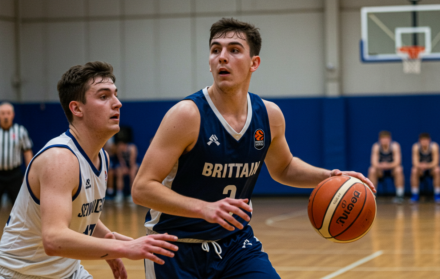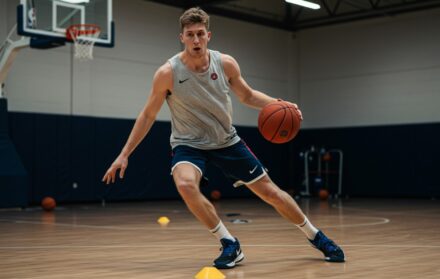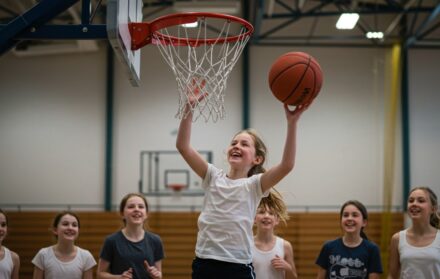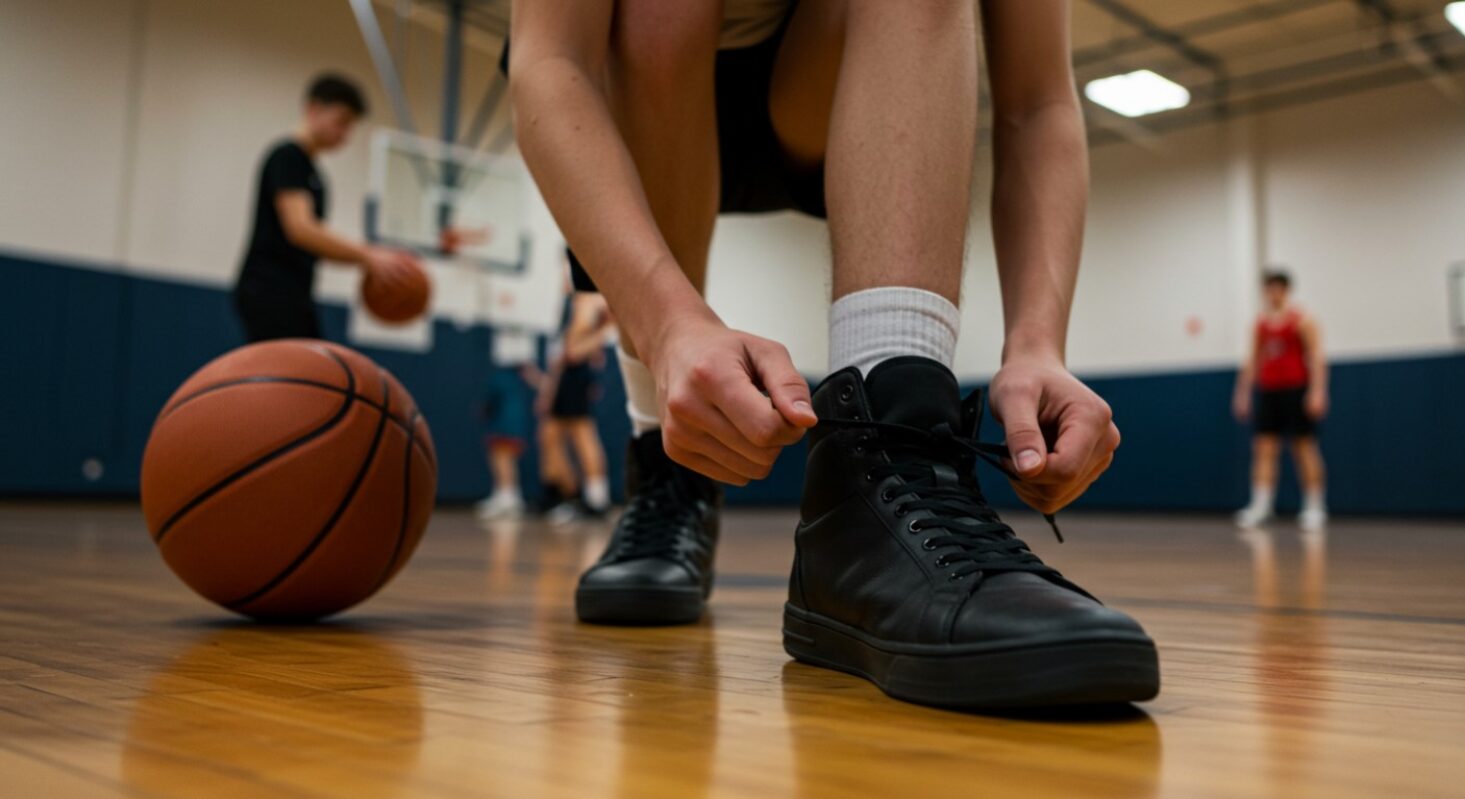
What Is the Best Basketball Gear for Beginners?
Getting started in basketball is simple. You need a safe pair of shoes, a correctly sized ball, and clothing that lets you move and breathe. Everything else is optional. The challenge for beginners is that the market is full of flashy products that promise instant improvement.
Most of them are not necessary. This guide cuts through the noise and shows you what to buy first, what to consider later, and how to choose gear that genuinely helps you play better and enjoy the game. Along the way, you’ll also get a clearer picture of how to play basketball — not just through equipment, but by understanding the basics of movement, ball control, and teamwork.
The right basketball gear makes practice easier and safer. A good pair of shoes helps you stay balanced on defence, a quality ball improves your feel when dribbling, and lightweight clothing lets you focus on the game instead of on distractions. From there, adding simple basketball training drills into your routine helps turn that equipment into real skills. Whether it’s layup lines, dribbling cones, or shooting repetitions, drills connect what you buy with what you do on the court.
With this foundation — the right gear, a sense of how to play, and consistent practice — you’ll be ready to join pickup games, train with friends, or just enjoy shooting around on your own.
Why the Right Basketball Gear Matters for Beginners
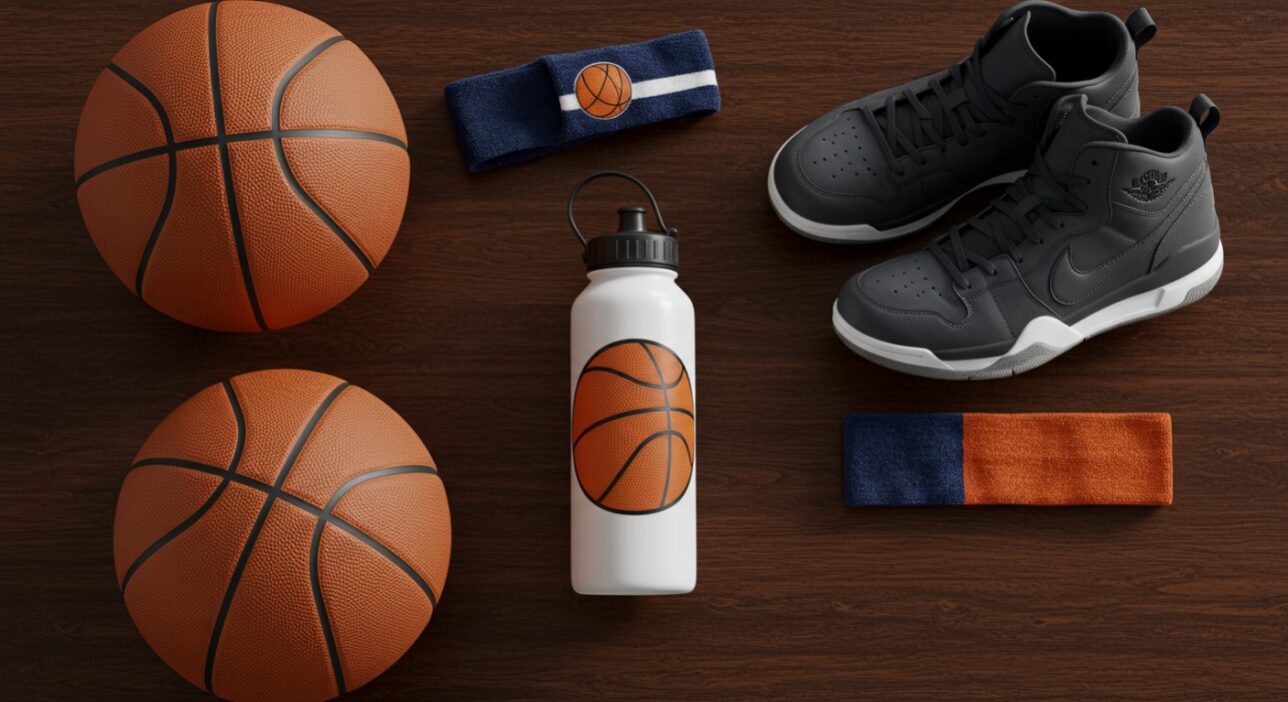
Good basketball gear does three things. It keeps you safe, it helps you move naturally, and it makes practice enjoyable enough that you keep coming back. A grippy shoe reduces slips on sharp cuts. A correctly sized ball builds proper shooting form and confidence. Breathable kit keeps you comfortable in long sessions. Start with the essentials. Add extras only when they solve a clear problem for you.
Basketball Shoes: The Foundation of Every Player
If you buy only one premium item, make it your shoes. Court shoes are designed for hard stops, repeated jumps, and rapid lateral movement. Running shoes are built for forward motion and soft landings. Wear the right tool for the job.
Why shoes matter most
-
Support: basketball shoes stabilise ankles and midfoot during cuts and landings.
-
Grip: indoor outsoles use sticky rubber and traction patterns that help you plant and change direction.
-
Injury prevention: proper lockdown and cushioning reduce the risk of rolled ankles, blisters, and knee stress.
Types of basketball shoes
-
High-top: more material around the ankle. Offers a secure feel and mild support for players who like a locked-in fit.
-
Mid-top: a balanced option for most beginners. Enough collar height for security without extra bulk.
-
Low-top: light and quick underfoot. Favoured by guards and wings who want maximum freedom. Fine for beginners with decent ankle strength and a good fit.
There is no proven injury rate difference that applies to everyone. Fit and stability matter more than collar height.
How to choose the right size and fit
-
Try shoes at the end of the day when feet are slightly larger.
-
Stand, lace fully, and mimic basketball moves. Shuffle sideways, plant, and jump.
-
Aim for a thumbnail of space from the longest toe to the end of the shoe, with zero heel slip.
-
Check midfoot lockdown. If your foot slides on hard cuts, try a different lacing pattern or a different model.
-
If you play mostly indoors, pick a softer, stickier outsole. For outdoor courts, choose harder rubber that resists abrasion.
Beginner-friendly lines to start with
You do not need signature models. Team lines from major brands offer reliable performance at lower prices.
-
Nike: Precision, Fly By, Renew Elevate.
-
Adidas: Own the Game, Dame Team models, Hoops series.
-
Under Armour: Lockdown, Spawn Team, Jet.
-
Puma and New Balance: Rise Nitro Team, Two Wxy Team lines are also worth a look.
Common shoe mistakes
-
Wearing running shoes on court. They lack side-to-side stability and traction patterns for basketball.
-
Choosing style over support. Fit first, then cushioning feel, then looks.
-
Ignoring surface. Soft indoor rubbers wear out fast on tarmac. If you mostly play outdoors, buy an outdoor-ready pair.
Basketball: Choosing the Right Ball
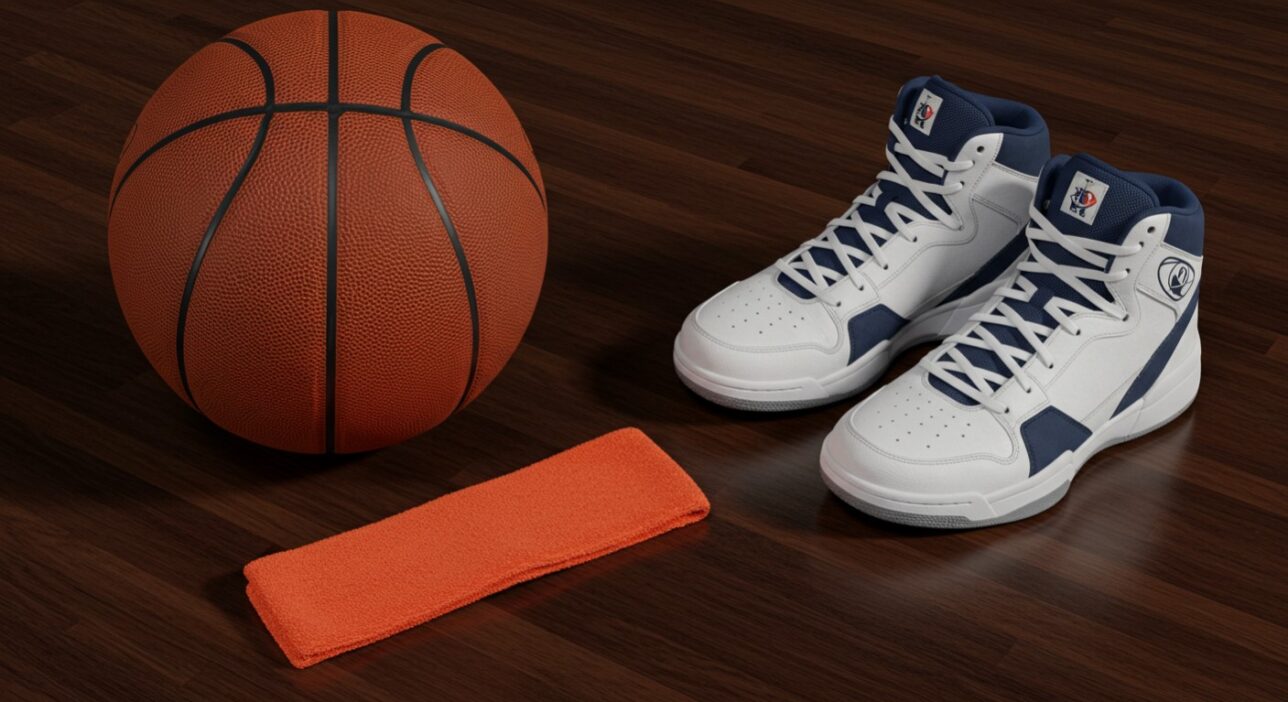
A good ball improves touch, spin, and confidence. The wrong ball makes you fight your equipment.
Size guide
-
Size 7 (29.5 in): standard for adult men.
-
Size 6 (28.5 in): standard for adult women and common for youth and mixed sessions.
-
Size 5 (27.5 in): children and primary school age.
Pick the ball size used in your league or pickup games. Practise with the same size you will use in matches. Consistency builds muscle memory.
Indoor vs outdoor
-
Leather: premium indoor feel and grip once broken in. Not suitable for outdoor use and usually expensive.
-
Composite leather: versatile, good feel, works indoors and outdoors. Ideal for most beginners.
-
Rubber: durable and budget-friendly, best for outdoor courts and parks. Grip is serviceable but not as plush.
If you split time between the gym and the park, a composite ball is the safest choice.
Reliable brands with good value
-
Spalding: classic feel, wide channel designs that suit shooters.
-
Wilson: consistent bounce and grip, often the official ball in major competitions.
-
Molten: popular in international play with distinctive panel designs and dependable quality.
Simple ball care tips
-
Keep it at the recommended pressure. Under inflated balls feel dead and teach poor mechanics.
-
Wipe dirt and dust off the surface to restore grip.
-
Do not use an indoor leather ball on outdoor concrete.
Clothing and Apparel for Basketball
You want freedom of movement and fabrics that pull sweat away from skin.
What to wear
-
Shorts: knee length athletic shorts that do not restrict lateral movement.
-
Tops: sleeveless or short sleeve athletic tees in moisture wicking materials. Avoid heavy cotton that holds sweat.
-
Socks: cushioned sport socks that cover the ankle bones. Extra pairs prevent blisters and keep feet fresh in long sessions.
-
Compression gear: optional sleeves, tights, or shorts can add mild support and reduce muscle vibration. Many pros wear them for function, not just style.
Practical tips
-
Keep two or three sets of basic kit so you can train consistently even when one set is in the wash.
-
Wash gear promptly to prevent odour build up. Air dry shoes rather than using direct heat.
Safety and Protective Gear
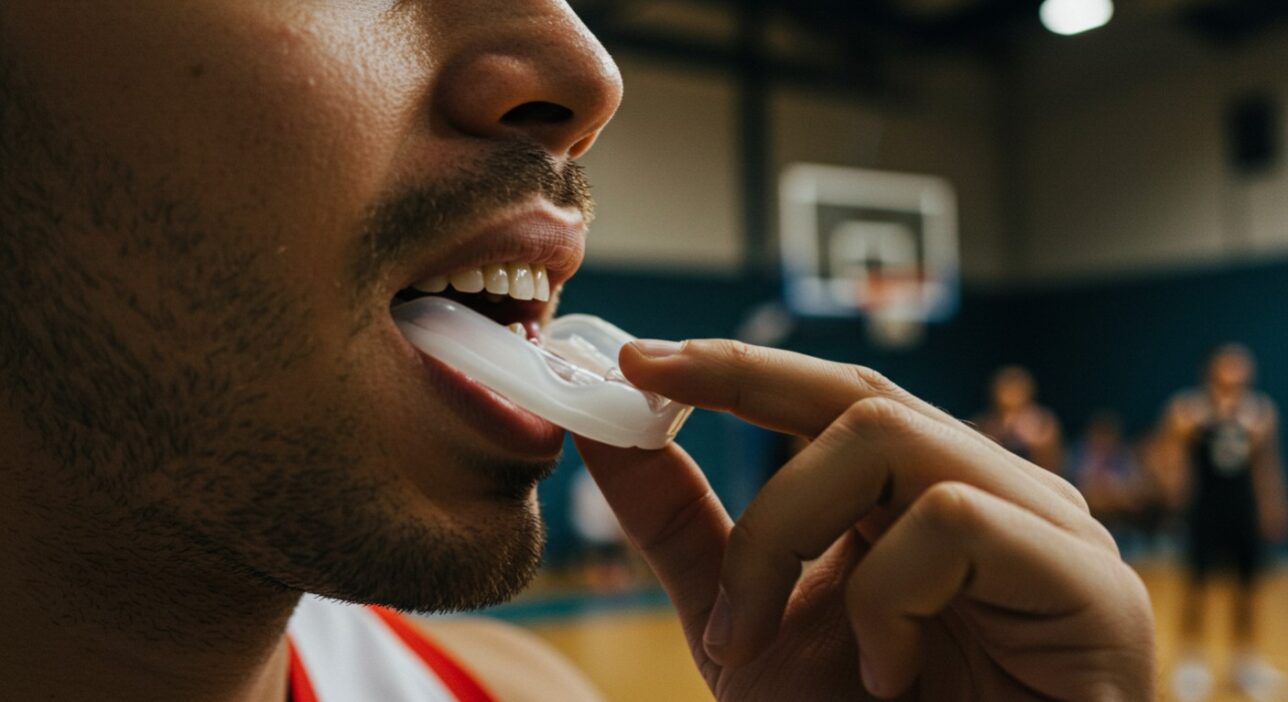
You do not need to look like you are wearing armour, but a few low-cost items reduce risk.
Mouthguards
-
Cheap, boil-and-bite models are fine for most beginners.
-
Useful in competitive games or crowded pickup runs where elbows and stray hands happen.
-
Store in a vented case and clean regularly.
Knee and elbow pads
-
Thin sleeves with padding help on falls and dives.
-
Especially helpful for outdoor courts where surfaces are unforgiving.
Ankle braces
-
Consider if you have a history of rolling ankles or if you feel unstable.
-
Choose semi rigid or lace up braces that fit comfortably inside your shoe. Do not over tighten to the point you lose blood flow.
-
Braces are not a substitute for strength and mobility work. Use them as a short term support while you build stability.
When to use protection
-
Recommended: mouthguard for contact or competitive play, pads for outdoor courts, ankle support if recovering from a sprain.
-
Optional: compression sleeves and tights for comfort, preventative knee sleeves if you have minor niggles.
Training Aids and Accessories
Focus on tools that increase quality repetitions at low cost.
Jump rope
-
Cheap, portable, and perfect for footwork, rhythm, and conditioning.
-
Start with sets of 30 to 60 seconds. Build to intervals and footwork patterns.
Resistance bands
-
Great for warm-ups, glute activation, and shoulder stability.
-
Use mini bands for lateral walks and hip work. Use light long bands for shoulder external rotations and scapular control.
Cones or markers
-
Create dribbling lanes, change of direction drills, and close out paths.
-
Even water bottles or chalk marks work if you are on a budget.
Ball return nets and shooting sleeves
-
A return net saves time if you have a home hoop.
-
Shooting sleeves do not make shots go in. They can keep the arm warm and reduce minor abrasion. Treat as optional.
Avoid wasting money on gimmicks
-
Weighted balls, odd shaped handles, or miracle shot trainers often teach patterns you will not use in games.
-
If an aid removes the need to control a normal ball with your hands and feet, be sceptical.
Essential Extras Every Beginner Should Carry
These small items make sessions smoother and more hygienic.
-
Water bottle: aim to sip between drills. Dehydration hurts focus and decision making.
-
Towel: wipe sweat and restore grip on the ball and hands.
-
Small gym bag: keeps shoes away from clothes and makes it easy to grab and go.
-
Extra socks: change after long sessions to prevent blisters and odour.
-
Blister plasters or tape: small first aid that saves a week of discomfort.
Nice to Have Gear for Motivation and Progress Tracking
![]()
You do not need any of these, but they can keep you consistent and accountable.
-
Basketball backpack with shoe compartment: useful if you commute to a gym or school court.
-
Smart basketballs and training apps: track dribbles, arc, and makes. Data can be motivating, but do not let numbers replace focused practice.
-
Fitness tracker or smartwatch: log heart rate and recovery. Helpful for conditioning goals.
-
Notebook or journal: the cheapest performance tool. Record drills, shot counts, and notes like a coach.
Budgeting Tips for Beginners
Spend where it matters. Save where you can.
Prioritise first
-
Shoes: your top investment. Look for last season’s colourways for discounts.
-
Ball: buy the correct size and surface type. Composite leather is the sweet spot for most people.
-
Clothing: two or three sets of breathable basics. No need for premium logo gear.
Where to save
-
Team lines and outlet stores offer excellent shoes at lower prices.
-
Multi pack socks and simple moisture wicking tees work as well as high end kit.
-
Use household items as cones. Borrow a return net or share with a friend if possible.
When to invest more
-
After a month of consistent play, upgrade shoes if your current pair does not fit perfectly.
-
Add a second ball if you start two ball dribbling or want an indoor and an outdoor ball.
-
Consider a hoop or return net if you regularly shoot at home and want more reps.
Example starter budgets
£100 basic kit
-
Entry level team line shoes: £55 to £65 on sale
-
Composite or rubber size appropriate ball: £20 to £30
-
Two tees and a pair of shorts: £15
-
Socks multi pack: already owned or £10
£300 serious beginner kit
-
Mid tier basketball shoes with premium cushioning: £110 to £140
-
Quality composite indoor and outdoor ball: £60 to £80
-
3 tops, 2 shorts, 4 to 6 pairs of cushioned socks: £60 to £80
-
Jump rope and resistance bands: £20 to £30
-
Lightweight backpack with shoe compartment: £30 to £40
Prices vary by retailer and season. Shop sales and last year’s models for the best value.
Putting It All Together: A Simple Gear Checklist
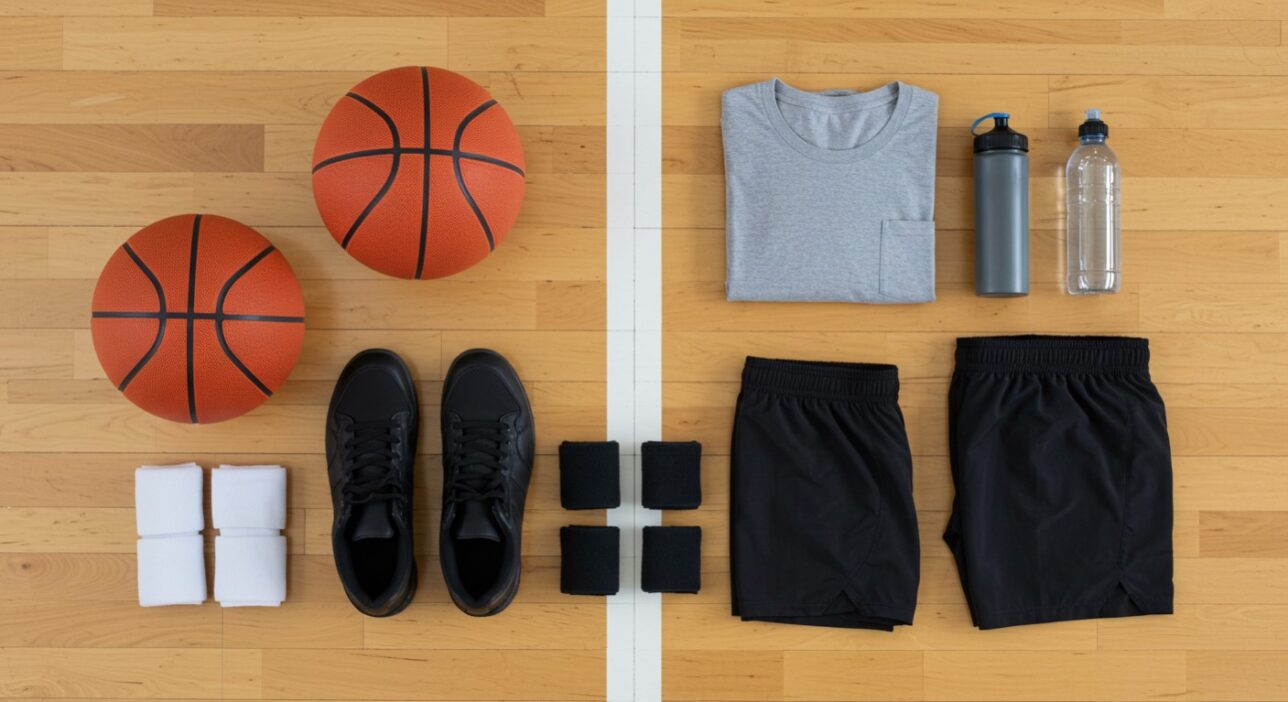
Essentials
-
Correct size basketball shoe with secure fit
-
Correct size ball for your league or group
-
Breathable shorts and top
-
Cushioned sport socks
-
Water bottle and towel
-
Small gym bag
Recommended for many players
-
Mouthguard for competitive or crowded play
-
Cones or markers for drills
-
Jump rope and light bands for warm up and conditioning
-
Extra socks and basic first aid in the bag
Optional extras
-
Ankle braces if recovering from a sprain and advised by a professional
-
Knee or elbow pads for outdoor courts
-
Backpack with shoe pocket for travel
-
Journal, fitness tracker, or smart ball for data driven practice
Common Beginner Mistakes and How to Avoid Them
-
Buying by looks not fit. Always prioritise lockdown, comfort, and traction. Try multiple sizes and models.
-
Using the wrong ball size. Practise with the size used in your games. Mixing sizes confuses your touch and release.
-
Wearing cotton. Heavy cotton holds sweat. Choose breathable fabrics so you stay comfortable and focused.
-
Skipping socks. Thin casual socks invite blisters. Wear cushioned sport socks and carry a spare pair.
-
Over spending on gimmicks. If a product promises to replace practice, it is usually a distraction.
-
Neglecting maintenance. Keep shoes clean and dry. Wipe your ball. Check inflation weekly.
How Gear Helps Your Development
-
Shoes let you trust your feet. Trust builds aggression on drives and confidence on defence.
-
The right ball improves feel, spin, and shooting rhythm. It is your main training partner.
-
Clothing keeps you comfortable so you can practise longer and with better focus.
-
Safety gear reduces fear of falls and contact, which frees you to play assertively.
-
Training aids increase the number of quality reps without adding complexity.
Think of gear as the environment for your habits. Set the environment well, then put in the repetitions.
Conclusion: Gear That Helps Beginners Thrive
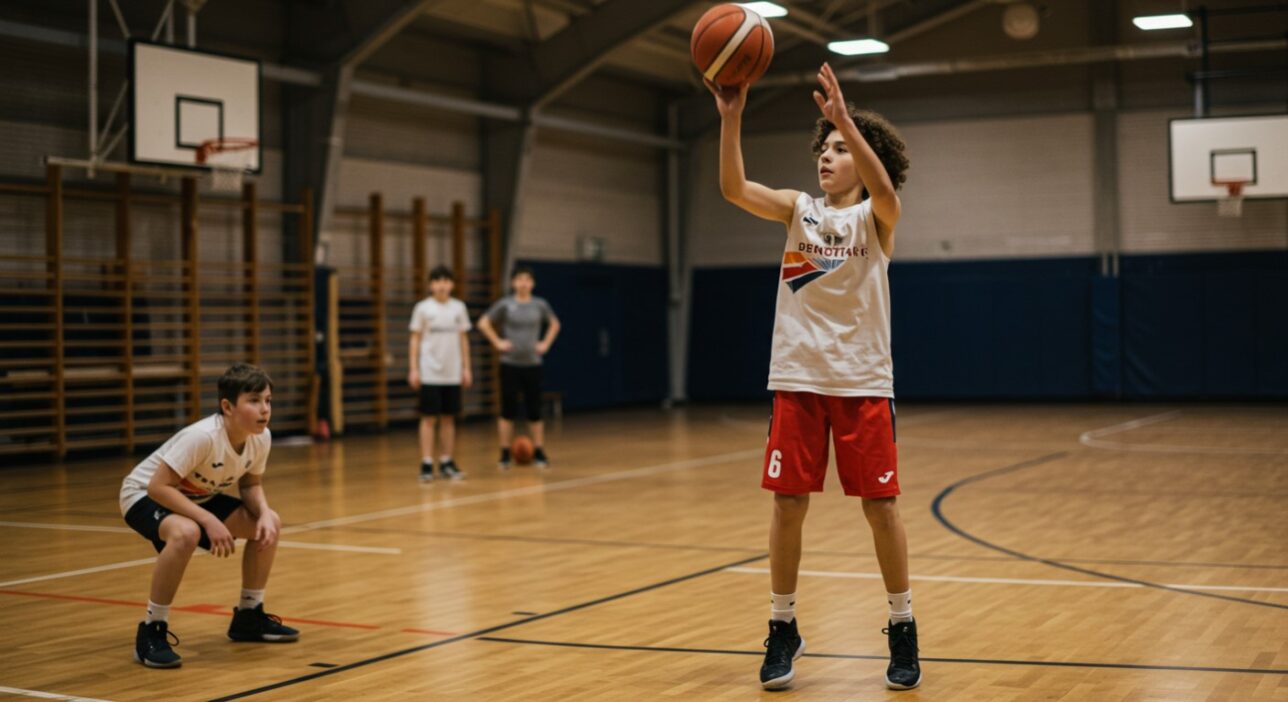
You do not need a mountain of equipment to start playing confidently. Focus on three essentials first. A supportive, grippy pair of basketball shoes. A correctly sized ball that suits your court. Comfortable, breathable clothing with a spare pair of socks in your bag. Add a mouthguard for contact games and simple training aids like a jump rope and bands to warm up properly.
As you play more, you will discover specific needs. Maybe you want knee pads for outdoor dives, or a backpack that keeps shoes away from clean kit, or a second ball for home practice. Add items when they solve a real problem for you, not because a product promises shortcuts. The goal is to support your learning and enjoyment, not to collect gear.
Start simple, train consistently, and upgrade thoughtfully. With the right essentials and steady practice, your skills will grow and the game will stay fun.
